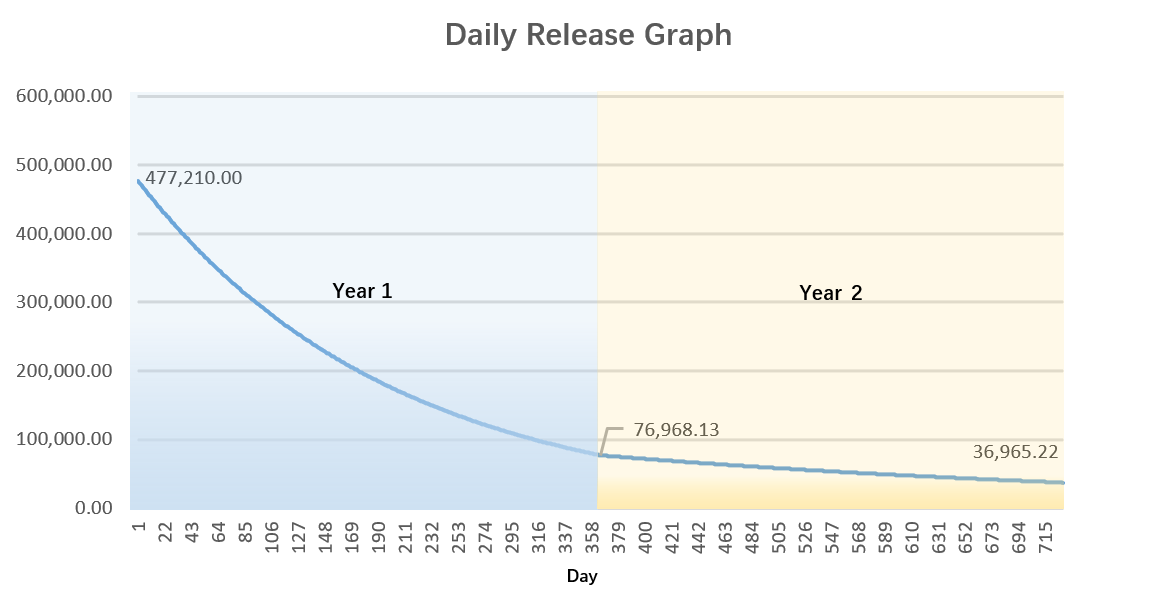ViteX 101: Decentralized Exchange
-
ViteX 101: Decentralized Exchange
All you need to know about Vite, ViteX and VX!

Brief Introduction
Vite = DAG Public Chain + Smart Contract | Tokens = VITE
Our product ecosystem includes:
- Web, iOS and Android Wallets
- Decentralized Exchange (DEX)
- Crypto Powered E-Commerce Platform
- Point of Sale Solution for Merchants
- Decentralized Applications (dApp) Platform
These products are empowered by capabilities including:
- Payment Infrastructure With No Time Lags Nor Fees
- One-Click Token Issuance
- Smart Contracts Programmed in Solidity++
ViteX = Decentralized Exchange (DEX) | Tokens = VX
ViteX is developed on the Vite public chain, which features high throughput, fast transaction confirmation, zero fees, cross-chain gateway and more! The community has 100% autonomy to mint tokens, build cross-chain gateways and create trading pairs. Our order book is fully open via API, which allows others to launch their own exchanges based on liquidity in ViteX.
VX has no private sale, public crowd sale, pre-mining nor pre-sale. VX can only be earned through mining, which means confirming transactions on ViteX. Holders of VX enjoy dividends from transaction fees and other income generated through ViteX. In short, mining is 1) trading 2) staking 3) listing.
Twitter: https://twitter.com/ViteXExchange
Telegram: https://t.me/vitexexchange
Q: What is ViteX?
ViteX is a DEX developed on the Vite public chain and features absolute decentralization, higher security of digital assets and robust economic models for both sending/receiving transactions and confirming transactions.
Q: What is VX?
VX is the token related to ViteX. Users who hold VX enjoy dividends of transaction fees and listing fees. VX is conducting no public sale nor private sale. Users can only get VX through mining.
Q: Why release VX? Will it affect VITE? What is the relationship between VX and VITE?
VX can be understood as a “proof-of-equity” on the ViteX platform, which is a standalone application running on Vite, with its own incentive model to encourage more users to trade on ViteX.
The value of VX is positively related to the user volume and transaction volume of the exchange, and will not affect the value of VITE which is related to the Vite public chain. Instead, the value of VITE and the Vite chain increases if there are more dApps running on Vite.
VITE and VX are connected in some ways. For example, if VITE is staked to obtain quotas, VX can be earned. This means that resources on Vite can be used for transactions on ViteX.
Q: What is the difference between a truly decentralized exchange and other exchanges?
At present, most decentralized exchanges are subject to the performance of their own chain. Transactions are performed off-chain and results are shown on-chain. ViteX is a completely decentralized exchange; the transaction matching engine is performed through smart contracts. Order combinations are all completed on-chain so the order book is also stored on-chain, thus achieving true decentralization. The exchange fee redemption is implemented on-chain through smart contracts, thus ensuring that the results are fully public and dividend rules cannot be tampered with.
Q: The Vite chain has a transaction model without fees. Why does the Vite exchange charge a fee? Is the fee charged by VITE or other tokens?
Transactions on the Vite chain do not consume gas like in Ethereum, but they must consume certain resources, which is “quota.” If the amount of the quota is small, it can be provided free of charge through the mining pool. If the amount is high for frequency trading, the cost of a quota is still required with less consumption than in other chains. Similarly, as a high frequency application, ViteX needs a certain amount of quota. The transaction fees will be mainly charged as basic currencies: VITE, ETH, BTC, CUSD, etc.
Q: Does the exchange currency mechanism need to be reviewed, and how does Vite prevent pump and dump?
The ViteX matching engine is completely open. If the user is issuing tokens on Vite instead of on other chains, the exchange website can also sort, mark, filter or sub-block.
If the user’s assets are in other chains, they need to go through our gateway to transfer on Vite. ViteX will have the necessary gateway. There will be corresponding rules and costs associated with the Vite gateway.
If the user does not utilize the gateway recommended by ViteX, they can also run their own gateway. The currency necessary to transact can be controlled by the gateway itself.
Q: Is ViteX developed by a third party or in house?
A: The ViteX decentralized exchange was developed by the official Vite team — nothing was outsourced.
Q: What are the sources of funding for VX’s future development and maintenance?
A: Funds for future development and maintenance of VX are mainly from the foundation of Vite Labs.
Q: Why build a decentralized exchange?
A: There is significant market demand for decentralized exchanges. DEX will be a trend within the blockchain industry.
ViteX can effectively demonstrate the performance of the Vite public chain, including the performance of smart contracts. ViteX is a dApp on the Vite public chain, contributing to the ecosystem of Vite.
Q: Can you explain the VX protocol?
ViteX smart contract is not a protocol. The smart contract is based on the Take-Make method, which is based on the price priority order of the pending orders.
Q: What is the difference between VX and other exchange tokens?
VX does not have a pre-sale, private-sale nor public sale. Everyone can participate in VX mining. Users who hold VX can receive dividends of all transaction fees and token listing fees; this is highly differentiated compared to most other digital asset exchanges.
Q: How is VX distributed?
The total supply of VX is 100,000,000 with no inflation. The release of VX will gradually slow down to a mining timeline of two years.
- Among all VX issued in one day, 60% is distributed to traders, 30% to VITE stakers for ViteX and 10% to Vite Labs.
- The number of VX mined decreases 0.5% daily in the first year. 477,210.00 VX will be released on the launch date of ViteX. 76,968.13 VX will be released one year after the launch. Thus, 80.13% of total supply will be released in the first year. The number of mined VX will decrease 0.2% every day in the second year. 76,660.56 VX will be released on the first day of the second year and 36,965.22 VX will be released on the last day of the second year. The daily release volume of VX is depicted below.
Q: How do I get VX?
You can get VX in three ways. The first way is to trade on ViteX (“Trading is Mining”); the second way is to stake VITE and help ViteX receive quota for its operations (“Staking is Mining”); the third way is to list trading pairs (“Listing is Mining”).
Trading is Mining: 60% of daily released VX will be distributed to traders according to the proportion of their transaction fee on ViteX (token issuers also take a share in this transaction fee pool, as explained below); Currently there will be four markets: BTC market, ETH market, VITE market and a stablecoin market. Each market will equally share 15% of the daily distribution.
Staking is Mining: 30% of daily released VX will be distributed to users who participate in staking VITE for the benefit of ViteX. That is, to receive VX, these users must stake VITE and set ViteX’s smart contract address as the quota beneficiary. The VX distributed to each staker is in proportion to the amount staked.
Listing is Mining: A user (“token issuer”) that lists a new trading pair will receive VX. As mentioned earlier, the token issuer receives VX by participating in the same pool as traders, with his share calculated as if he executed a trade involving a transaction fee of 1,000 VITE. A listing fee is required for the DEX: For a token issued on Vite chain, the listing fee is 10,000 VITE. Otherwise, a cross-chain gateway will be involved in the listing, and a related fee may be added.
By holding more than 10 VX, one may continuously obtain dividends of daily trading and listing activities. Although VX is only earned through mining, VX will be tradeable on ViteX. VX can simply be seen as a stock certification of ViteX.
A minimum amount of VX is required to receive dividends. A VX holder must have at least 10 VX in his ViteX account.
Q: How do transaction fees work?
Transactions on the Vite chain do not consume gas (as does transactions on Ethereum), but consumes a different type of resource called “quota.” Quota is offered for free for transactions at a low frequency. Transactions at a higher volume require quota. ViteX requires a large quota to operate, given its nature as a high frequency trading dApp. Transaction fees are meant to partially offset the consumption of quota. Transaction fees are denominated in “basic currencies” such as VITE, ETH, BTC and stablecoins.
Q: How do trading fees work?
0.5% will be collected from takers and makers. All transaction fees will be redistributed among VX holders.
Q: How do withdrawal fees work?
There are no fees for deposits and withdrawals between Vite wallet and ViteX; only quota will be consumed in these cases. When assets are withdrawn to non-Vite wallets, the cross-chain gateway will charge a withdrawal fee.
Learn More
https://medium.com/vitelabs/the-revolution-of-dex-vitex-7aa6553f441f
https://medium.com/vitelabs/vite-bi-weekly-report-77eb6d5934cd
https://medium.com/vitelabs/vite-bi-weekly-report-90dcc4819441
https://medium.com/vitelabs/vitex-economic-model-392613c4389d
https://medium.com/vitelabs/vote-for-your-preferred-vitex-economic-model-a4d7f9e73af2
Official: https://www.vite.org/
Vite Forum:https://forum.vite.net
Telegram:
- English: https://t.me/vite_en
- Chinese(中文): https://t.me/vite_zh
- Russian: https://t.me/vite_russia
- Korean: https://t.me/vite_korean
- Vietnamese: https://t.me/vite_vietnamese
- Thai: https://t.me/vite_thailand
- Japanese: https://t.me/vite_japanese
- German: https://t.me/vite_german
Twitter:https://twitter.com/vitelabs
-

-
This post is deleted!
